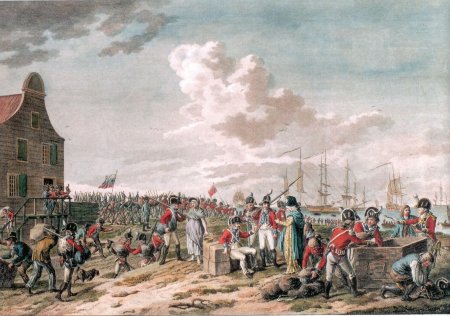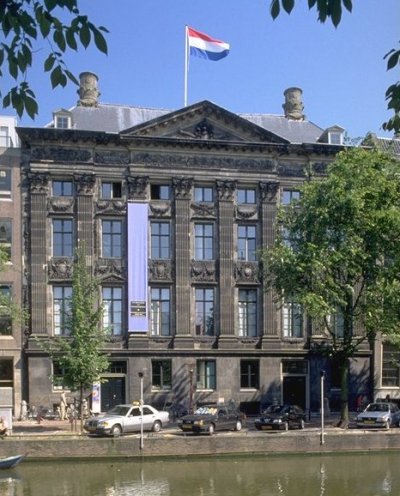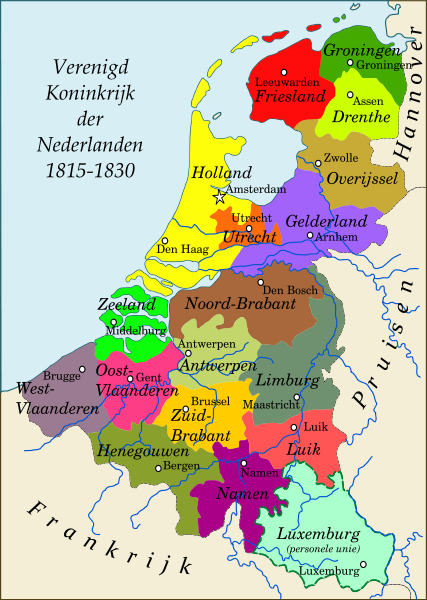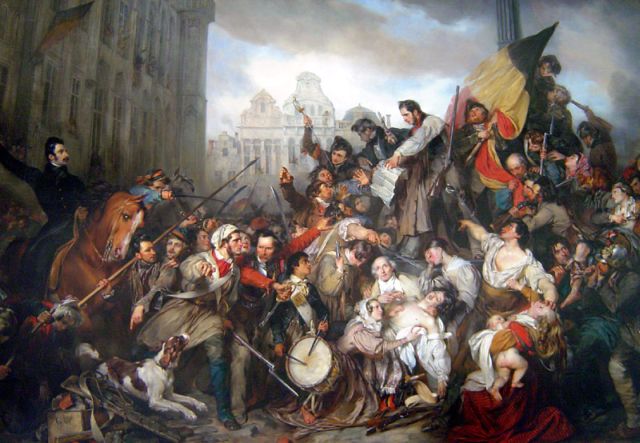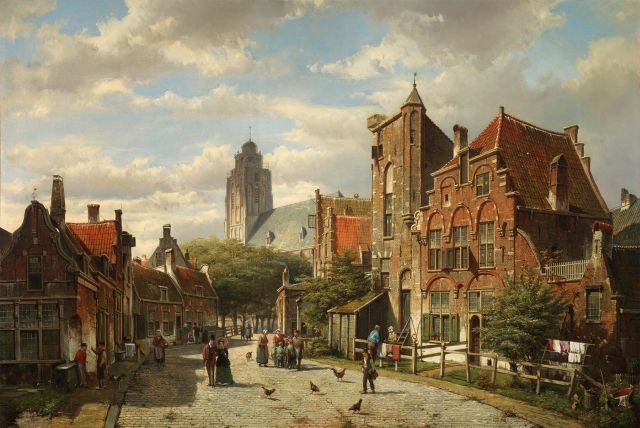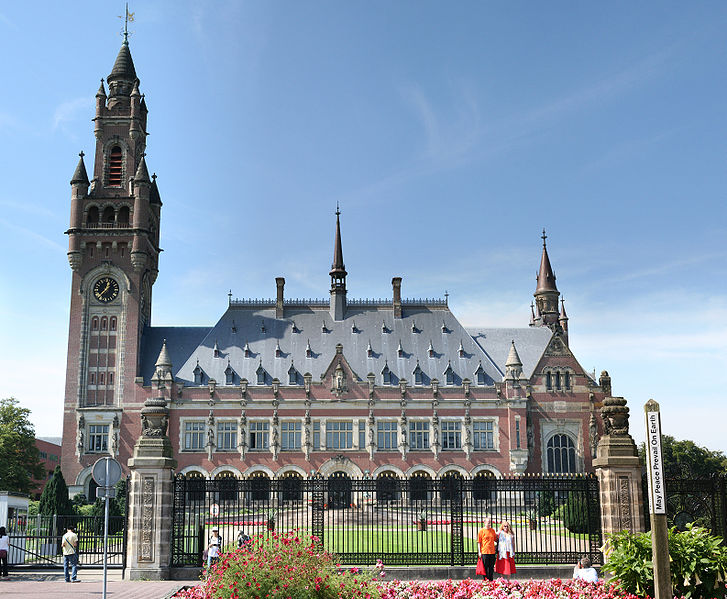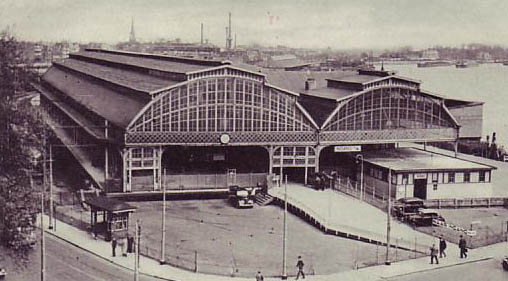1. Under French influence
Great French Revolution (1789) and the rule of Napoleon Bonaparte (1799-1813) were not without effect on the fate of the Northern Netherlands. First Dutch tried to adopt revolutionary changes – with the help of France. Then the country gradually fell into increasing dependence on the French Empire to be ultimately incarnated to it by Bonaparte.
1.1 The Batavian Republic (1795 – 1806)
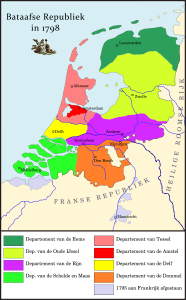 In January 1795 French revolutionary army occupied Northern Netherlands what led to proclaiming on January 19, 1795 a new state – the Batavian Republic. The ideas of the French Revolution were adopted there well, but creating new political system required long and hard struggle for it. Three times it led even to the coups d’état (twice in 1798 and one in 1801). Democratic concepts (people’s power) clashed with the monarchist ideas (power of the House of Orange), radical options clashed conservative ones and unionists fought with federalists. There was no bloody terror however.
In January 1795 French revolutionary army occupied Northern Netherlands what led to proclaiming on January 19, 1795 a new state – the Batavian Republic. The ideas of the French Revolution were adopted there well, but creating new political system required long and hard struggle for it. Three times it led even to the coups d’état (twice in 1798 and one in 1801). Democratic concepts (people’s power) clashed with the monarchist ideas (power of the House of Orange), radical options clashed conservative ones and unionists fought with federalists. There was no bloody terror however.
On the map: the Batavian Republic, 1798.
Shortly after the arrival of the French troops, the States-Provincial had been replaced by the Provisional 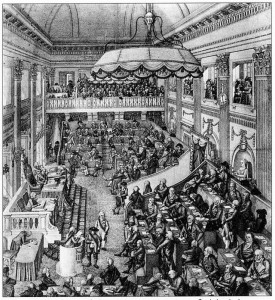 Representation of the People of the Netherlands, the office of the stadtholder was abolished and human and civil rights were passed. Established in 1798 the National Assembly adopted constitution. Its main provisions were as follows: executive power in hands of directors, the new administrative division, indirect elections, pro-Orange lobbyists lost voting rights. In 1801 it was created a new, more conservative constitution, which established a new executive body – Regency of State and the new legislative body (but without the right of legislative initiative). The anti-Orange sanctions were abolished. On the picture: National Asembly, 1796.
Representation of the People of the Netherlands, the office of the stadtholder was abolished and human and civil rights were passed. Established in 1798 the National Assembly adopted constitution. Its main provisions were as follows: executive power in hands of directors, the new administrative division, indirect elections, pro-Orange lobbyists lost voting rights. In 1801 it was created a new, more conservative constitution, which established a new executive body – Regency of State and the new legislative body (but without the right of legislative initiative). The anti-Orange sanctions were abolished. On the picture: National Asembly, 1796.
Wilhelm V did not give up and tried to regain power in 1799, with a military help of England. He came to the Batavian Republic, but nation didn’t upraise so the goal had not been achieved.
English and Russian troops invading Netherlands, 1799
Some colonies voted for him, but some sided with the Republic. Great Britain did not remain a passive observer of those events and in September 1795 declared war to new state, then conquered the Dutch colonies. This issue was resolved in the peace of Amiens (1802), under which England didn’t give back Ceylon and part of the colonies in the Western Hemisphere.
The international situation had become a serious problem of the Batavian Republic, which desperately tried to remain neutral and to avoid supporting Napoleon in his wars with England (it was against interests of the Republic). The emperor did not like it of course, and under the threat of in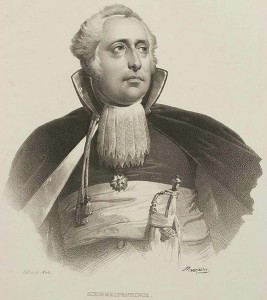 corporation of the state in 1805, he forced taking the dictatorial power by the Grand Pensionar Rutger Jan Schimmelpenninck, known him well for years of his ambassadorial service in France. Ironically, it turned out to be good for Republic, as Schimmelpenninck conducted many beneficial reforms. His rule did not last long, however, because he did not want to be subordinate to Napoleon and his disastrous for the Republic policies. In this situation Bonaparte decided to remove inconvenient functionary and transform Republic into the satellite kingdom, placing on the throne his brother Louis. It happened on June 5, 1806, which is the date that marks the end of the Batavian Republic. On the picture: Rutger Jan Schimmelpenninck.
corporation of the state in 1805, he forced taking the dictatorial power by the Grand Pensionar Rutger Jan Schimmelpenninck, known him well for years of his ambassadorial service in France. Ironically, it turned out to be good for Republic, as Schimmelpenninck conducted many beneficial reforms. His rule did not last long, however, because he did not want to be subordinate to Napoleon and his disastrous for the Republic policies. In this situation Bonaparte decided to remove inconvenient functionary and transform Republic into the satellite kingdom, placing on the throne his brother Louis. It happened on June 5, 1806, which is the date that marks the end of the Batavian Republic. On the picture: Rutger Jan Schimmelpenninck.
Despite the shortness of its existence the importance of this republic for the Netherlands was enormous. Overcoming the federalist tendencies well served the unity of the country and Schimmelpenninck’s reforms provided foundation for modern Dutch state. Memory of its democratic shape affected democratic form of the rule, which was introduced in the monarchy in 1848. It was the first time in the Batavian Republic when government began to exercise power and the Dutch proudly refer to this period of their history. The Netherlands (the united provinces) became finally (united) Netherland.
1.2 The Kingdom of Holland (1806 – 1810)
Louis Bonaparte began to rule in the Kingdom of Holland – such was the name of the new state – on June 22, 1806, with a large indifference of the Dutch. Only after death of William V many proponents of the Orange dynasty and monarchism gave him th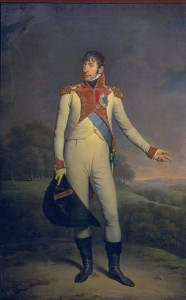 eir support. Louis himself disappointed Napoleon much as he showed big loyalty to his kingdom, to which he indeed harbored great affection. Divergence of interests of the French Empire and the Kingdom of Holland was huge. Bonaparte treated new state mainly as a tool on his war against England – it should be a source of money, soldiers and supporter of his policies. And in this period the emperor began continental blockade of the United Kingdom, what was in flagrant contradiction with the interests of the Kingdom of Holland. Louis resisted those demands, especially the huge state debt redemption, and he tolerated violating orders connected with the continental blockade. When in 1809 the English shortly occupied Zealand, Bonaparte found it necessary to eliminate the kingdom and incorporate it into the French empire. In 1810 French troops began the occupation and Louis abdicated in favor of a son, who, however, never ruled after his father. On the picture: king Louis Bonaparte.
eir support. Louis himself disappointed Napoleon much as he showed big loyalty to his kingdom, to which he indeed harbored great affection. Divergence of interests of the French Empire and the Kingdom of Holland was huge. Bonaparte treated new state mainly as a tool on his war against England – it should be a source of money, soldiers and supporter of his policies. And in this period the emperor began continental blockade of the United Kingdom, what was in flagrant contradiction with the interests of the Kingdom of Holland. Louis resisted those demands, especially the huge state debt redemption, and he tolerated violating orders connected with the continental blockade. When in 1809 the English shortly occupied Zealand, Bonaparte found it necessary to eliminate the kingdom and incorporate it into the French empire. In 1810 French troops began the occupation and Louis abdicated in favor of a son, who, however, never ruled after his father. On the picture: king Louis Bonaparte.
Reminders of Louis are still existing Academy of Arts, Academy of Science and the Royal Library in The Hague.
Trippenhuis – The Royal Academy od Arts in Amsterdam
1.3 A French Province
France begun the occupation of the Netherlands on July 13, 1810 and the power of Napoleon was exercised by the Governor-General. Also this time the Dutch were passive about changes having place in their country, hoping for big benefits coming from the union with France. Unfortunately, those merchants’ hopes were not realized because the French impeded their trade wit h the Germans and Belgians. This resulted in growing grievance against Napoleon (deepened by his demands on providing more and more soldiers) and awakening national consciousness. At the end of the Bonaparte’s reign there happened even anti-French riots, but mostly initiated by the lower strata of society who suffered most as a result of the forced conscription. Following this was gradually growing popularity of Wilhelm VI, son of Wilhelm V. After Napoleon’s defeat at Leipzig in 1813 supporters of the House of Orange caused the outbreak of the anti-French uprising in The Hague (November 17, 1813) and Wilhelm VI was called to the Netherlands to become a sovereign prince Wilhelm I – Orangists referred to the will of the Dutch society. Wilhelm I had not refused and showed up in the Netherlands (with the assistance of the English) on November 30, 1813. On the painting: Landing of the future king Willem I in Scheveningen, November 30, 1813 r.
h the Germans and Belgians. This resulted in growing grievance against Napoleon (deepened by his demands on providing more and more soldiers) and awakening national consciousness. At the end of the Bonaparte’s reign there happened even anti-French riots, but mostly initiated by the lower strata of society who suffered most as a result of the forced conscription. Following this was gradually growing popularity of Wilhelm VI, son of Wilhelm V. After Napoleon’s defeat at Leipzig in 1813 supporters of the House of Orange caused the outbreak of the anti-French uprising in The Hague (November 17, 1813) and Wilhelm VI was called to the Netherlands to become a sovereign prince Wilhelm I – Orangists referred to the will of the Dutch society. Wilhelm I had not refused and showed up in the Netherlands (with the assistance of the English) on November 30, 1813. On the painting: Landing of the future king Willem I in Scheveningen, November 30, 1813 r.
Recapitulation of the French period is twofold. The positive effect was modernization of the state through introduction of efficient administration, improved tax system, an independent judiciary and overcoming of separatism of the provinces. Economical effects were much worse. After the fall of Napoleon North Netherlands stood at the edge of economic disaster – fisheries, industries and maritime trade collapsed. For comparison, the number of vessels in Amsterdam in 1805 was 2394, in 1811 – 0. Stock market and banks were functioning well, however. Any attempts of introducing ideals of the French Revolution to the colonies were never successful, and regardless of the situation in the Netherlands, the old order was preserved.
2. United Kingdom of the Netherlands (1815 – 1830)
After establishment Wilhelm VI – since now Wilhelm I – a sovereign ruler 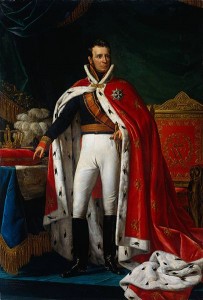 (December 2, 1813) the Northern Netherlands had to face two basic problems: shaping the political body of the new state and its borders. In the first field, as usual, a heated dispute broke out but finally the idea of a strong hereditary power of the prince had won. The Constitution of March 28, 1814 gave him the right to appointing ministers with strong reducement of the legislative prerogatives of the State-General, who was deprived of the right of legislative initiative. Wilhelm I also gained control over the colonies. (The other rulers of the House of Orange are presented in a separate story: The House of Orange.) On the picture: Willelm I in a coronation gown.
(December 2, 1813) the Northern Netherlands had to face two basic problems: shaping the political body of the new state and its borders. In the first field, as usual, a heated dispute broke out but finally the idea of a strong hereditary power of the prince had won. The Constitution of March 28, 1814 gave him the right to appointing ministers with strong reducement of the legislative prerogatives of the State-General, who was deprived of the right of legislative initiative. Wilhelm I also gained control over the colonies. (The other rulers of the House of Orange are presented in a separate story: The House of Orange.) On the picture: Willelm I in a coronation gown.
Interesting note
The daughter of William I, the princess Marianne of Orange, is connected somehow with Poland as she inherited some lands in Lower Silesia and built a lovely castle in Kamenz (Ząbkowice Śl). She was a good spirit of this land. More on this in: Lady from The Netherlands.
When it comes to borders, the idea of uniting the two parts of the Netherlands and the creation of a strong state, which would become a counterweight to France, appeared. This idea was eagerly supported by England (for this goal Great Britain resigned even the seized colonies except Ceylon) and Austria, which waived Belgium for properties in northern Italy. The new state also embraced Luxembourg as compensation for Dukes of Orange for their lost possessions in Germany.
Kingdom of the united Netherlands
The United Kingdom of the Netherlands was officially declared on May 23, 1815. The new constitution made the king the absolute ruler – the first and only time in the history of the Kingdom of the Netherlands. Parliament (under the influence of the Belgians was already a bicameral body, the I Chamber appointed by the king) could only approve king’s decisions. But differences and animosities between the Belgians and the Du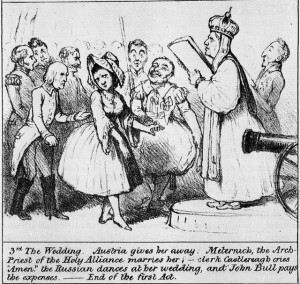 tch were too big to make the United Kingdom be able to survive, so after only 15 years there was a breakdown. The reasons for this were as follows: mutual dislike on religious basis (Protestants from the North did not like Catholics in the South, and those considered them heretics), growing mistrust, disregarding poor Belgians by wealthy Dutch, different historical experiences, difference education levels, glaring disparities in filling offices (the Dutch took almost all) and imposing also the Belgians to repay huge government debt of Northern Netherlands. A major role was played by the religious aspect – Belgian Catholic clergy was hostile to the House of Orange. What is more, the Dutch favoured a secular education, while the Belgians preferred having it in the hands of the Catholic Church. In the economic sphere there were also different habits – the Dutch valued liberalism while the Belgians voted for well-known protectionism. To these prejudices was added awkward policy of Wilhelm I, who wanted to impose Dutch as an official language too quickly. On the picture: Wedding of the Netherlands and Belgium, satire from the epoche.
tch were too big to make the United Kingdom be able to survive, so after only 15 years there was a breakdown. The reasons for this were as follows: mutual dislike on religious basis (Protestants from the North did not like Catholics in the South, and those considered them heretics), growing mistrust, disregarding poor Belgians by wealthy Dutch, different historical experiences, difference education levels, glaring disparities in filling offices (the Dutch took almost all) and imposing also the Belgians to repay huge government debt of Northern Netherlands. A major role was played by the religious aspect – Belgian Catholic clergy was hostile to the House of Orange. What is more, the Dutch favoured a secular education, while the Belgians preferred having it in the hands of the Catholic Church. In the economic sphere there were also different habits – the Dutch valued liberalism while the Belgians voted for well-known protectionism. To these prejudices was added awkward policy of Wilhelm I, who wanted to impose Dutch as an official language too quickly. On the picture: Wedding of the Netherlands and Belgium, satire from the epoche.
All these conflicts led to the outbreak of the anti-Dutch revolution in Belgium (August 25, 1830) and self-empowerment of Belgium, recognized as an independent state on December 10, 1830 (Dutch military intervention in 1831 failed). The Northern Netherlands became the Kingdom of the Netherlands.
Episodes from September Days 1830 on the Place de l’Hôtel de Ville in Brussels, Egide Charles Wappers
The final agreement the two countries signed in 1839, and although its terms were not satisfactory for any of the sides, the relationship between new states gradually normalized. At issue was a narrow, several kilometers wide strip of land in the vicinity of Maastricht, which is still in possession of the Netherlands. One half of Luxembourg became a province of Belgium the other half remained on the basis of a personal union to the Netherlands (this ended only in 1898, after taking the throne by Wilhelmina, because (the old Salische) law in Luxembourg forbade succession by a woman).
After the collapse of the United Kingdom of the Netherland the absolute power of Wilhelm I had been limited and disaffected king abdicated in 1840. During this period the province of Holland was divided into the province of South Holland the North Holland. The economic situation in the new country was at that time very difficult. The existing system of trade (brokerage, which usually gave the Netherlands a large profit) broke down, and much desired for growing industry raw materials like coal, iron and cotton Netherlands did not have at all. The competition with England and Belgium significantly had increased (restored sailing on Skalda made Antwerp again a port). Industry was very backward – the first steam pump was only used there in 1827.
Dutch street, 30.of 19th century, Willem Koekkoek
3. Constitutional monarchy
After Wilhelm I abdication the Kingdom of the Netherlands began to re-consider the constitutional issues. It was required by bourgeoisie, 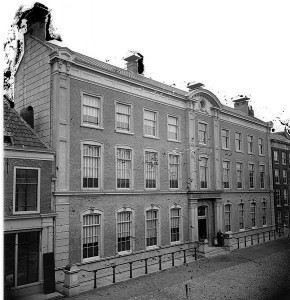 which demanded more power, and the society which disliked absolutist rule of Wilhelm I. Disputes about the new constitution lasted until 1848, when – under the influence of the Spring of Nations – a new one was passed. It significantly reduced the king’s personal power and expanded legislative powers of parliament, which was consisted of the two chambers. Since 1848 the Chamber I (higher) is chosen by the States-Provincial. It was also decided that education the primary responsibility is of the State. This regulation caused a deep dispute excruciating Netherlands over the next 70 years. On the photo: Hogereburgerschool (HBS) for boys in Leiden, 19th century.
which demanded more power, and the society which disliked absolutist rule of Wilhelm I. Disputes about the new constitution lasted until 1848, when – under the influence of the Spring of Nations – a new one was passed. It significantly reduced the king’s personal power and expanded legislative powers of parliament, which was consisted of the two chambers. Since 1848 the Chamber I (higher) is chosen by the States-Provincial. It was also decided that education the primary responsibility is of the State. This regulation caused a deep dispute excruciating Netherlands over the next 70 years. On the photo: Hogereburgerschool (HBS) for boys in Leiden, 19th century.
The new constitution tr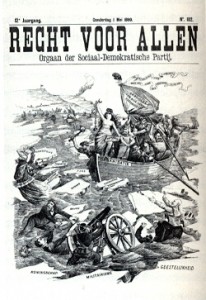 ansferred power to the wealthy bourgeoisie, which was favored by a high census for the voting rights and strong fragmentation of political parties. As in the rest of Europe, also in the Netherlands political parties began to be formed, but the big differences in the Dutch society, based on religion among others, meant that there were constant divisions and differences between the various factions were fuzzy. It led to a popular saying that when two Dutchmen meet, they make a couple, when three of them meet – religion, when four – a party. The genesis of the modern fragmentation of the parties (in present Netherlands there are about 100 of them!) originates at that time. On the picture: a cover of the Democratic-Social party magazine.
ansferred power to the wealthy bourgeoisie, which was favored by a high census for the voting rights and strong fragmentation of political parties. As in the rest of Europe, also in the Netherlands political parties began to be formed, but the big differences in the Dutch society, based on religion among others, meant that there were constant divisions and differences between the various factions were fuzzy. It led to a popular saying that when two Dutchmen meet, they make a couple, when three of them meet – religion, when four – a party. The genesis of the modern fragmentation of the parties (in present Netherlands there are about 100 of them!) originates at that time. On the picture: a cover of the Democratic-Social party magazine.
In the international arena the Kingdom of the Netherland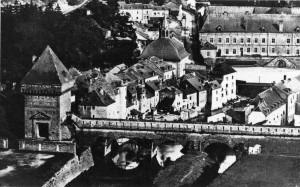 s began to pursue a policy of neutrality, but in two cases, this policy was thrown into doubt. The first case was a dispute over Luxembourg, which had hots for both France and Germany. Duchy was left to the Netherlands, but in 1898, after the throne was inherited by Wilhelmina, Luxembourg became independent.
s began to pursue a policy of neutrality, but in two cases, this policy was thrown into doubt. The first case was a dispute over Luxembourg, which had hots for both France and Germany. Duchy was left to the Netherlands, but in 1898, after the throne was inherited by Wilhelmina, Luxembourg became independent.
On the picture: Luxemburg city in 1868.
The second case was so called Boer Wars. Following the ongoing relationship of the Netherlands with South Africa it was tempting to involve in the conflict. Political realism prevailed however, because it could lead to the conflict with England or Germany, who supported Boers. Maintaining neutrality was not easy against the growing ambitions of imperial Germany, especially after the unification of Prussia. But such a choice made the Netherlands specialized in the law related to solving international problems by peaceful means, and the struggle for humanity and disarmament. Not by chance the first peace conferences (1899, 1907) were held in The Hague (resulting in passing the so-called Hague Conventions). The result of these agreements was the creation of the Hague Permanent Court of Arbitration, which still exists today.
Peace Palace in The Hague
3.1 Economical and social situation
In the second half of the 19th century, strongly declined economically Netherlands had to find a way out of the crisis and re-arrange the country. Such a solution became a new system of taxation in the Dutch East Indies, the so called cultuurstelsel, in the sense that the people had to spend 1/5 of their land for cultivation imposed on them by the Dutch, and the landless had to work for a 1/5 of the year at these plantations. This system (a 20% taxation to all) proved to be effective and profits of trade in sugar and coffee had risen considerably. Read also: Dutch East Indie.
Cultuurstelsel, Java
Also a positive effect was caused by increasing freedom of trade and the opening of the Suez Canal, significantly shortening the way to India. Following those changes was an inflow of private capital to the colony and this in turn contributed to the revival of the economy in the Netherlands. The country started adopting new technologies, built new waterways, railways and ports.
Rotterdam Maas Station, built in 1876
The development of the economy at that time was favored also by good economic cooperation with the German Reich. This did not mean, however, the total elimination of poverty, especially in rural areas, which in his early paintings was shown by Vincent van Gogh. At the end of the century the situation of the peasants began to improve.
An important issue of social life in the Kingdom of the Netherlands in the 19th century was again religion, which led to a deep division of society into Protestants and Catholics. The latter for many years were discriminated and treated even hostile, but after the French period had been allowed to restore the Catholic hierarchy and got their civil rights back. Now they particular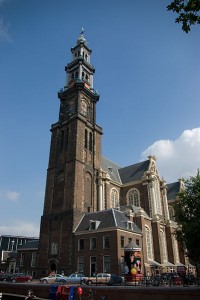 ly strongly demanded the takeover of schools by churches, in which, moreover, echoed the Protestants. In schools it resulted in the phenomenon of religious apartheid (separation of children of different faiths). The society was also heavily influenced by those formal divisions what took the form of the so-called “pillars” – a kind of vertical structures, grouping people of different backgrounds and classes united by religion. This was possible due to the fact that the Catholic clergy gained great influence in various organizations; professional, social, sport, etc. In comparison with the rest of Europe it was a rather strange phenomenon, but the system survived until the mid-20th century, and dispute over the school system lasted until the First World War. State education system, however, began to be fruitful – in 1870 already 75% of children between the ages of 5 and 15 were students. On the picture: protestant Westerkerk in Amsterdam.
ly strongly demanded the takeover of schools by churches, in which, moreover, echoed the Protestants. In schools it resulted in the phenomenon of religious apartheid (separation of children of different faiths). The society was also heavily influenced by those formal divisions what took the form of the so-called “pillars” – a kind of vertical structures, grouping people of different backgrounds and classes united by religion. This was possible due to the fact that the Catholic clergy gained great influence in various organizations; professional, social, sport, etc. In comparison with the rest of Europe it was a rather strange phenomenon, but the system survived until the mid-20th century, and dispute over the school system lasted until the First World War. State education system, however, began to be fruitful – in 1870 already 75% of children between the ages of 5 and 15 were students. On the picture: protestant Westerkerk in Amsterdam.

